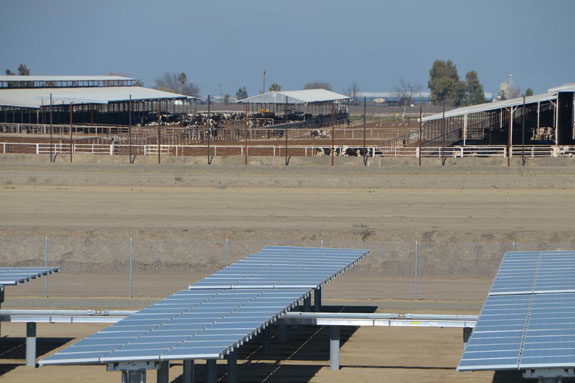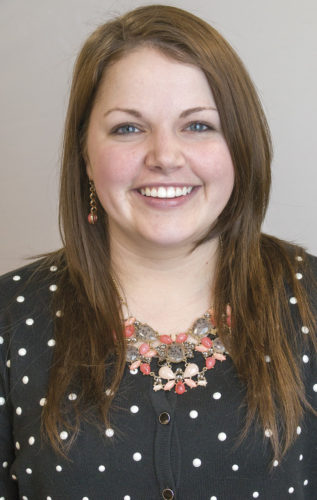World Ag Expo wasn't the only event happening in Tulare, California, on Feb. 18. SPG Solar teamed up with Curtimade Dairy, a 3,000-cow dairy, to provide nearly 30 dairy producers and local farmers with information and a tour of their recently installed solar power system. “This was a good opportunity for producers to see a large-scale system up close and personal,” says SPG Solar Business Development Director Dylan Dupre. “The open house allowed them to get comfortable with the technology.”
The Curti family is one of just a few California dairy operations that have implemented solar technology, but that number is expected to increase, says Dupre.
"We've seen solar panel costs come down about 40 percent," he says. "There are a number of government-sponsored programs that have helped to bring down the cost of these projects. Roll that in with the financing and low-interest loans available, and solar technology is helping dairymen reduce operating costs and improve their bottom line."
Another incentive for producers to research solar technology is rising electricity costs. Dupre says solar can be a "long-term solution," as it allows them a hedge against increasing utility rates.
For Curtimade Dairy, the solar panels will power about 85 percent of their electricity needs, resulting in a savings of $145,000. (Scroll down or to watch a video about Curtimade Dairy from the California Milk Advisory Board.)

In fact, SPG Solar installed a unique sun-tracking system, which allows the panels to produce up to 25 percent more power than a fixed tilt solar power system.
The system covers about four acres of ground and produces more than 1,420,000 kilowatt-hours annually. It took just three months to install the system, but the Curti family had certainly done their homework prior.
"We had to pencil it out," says Curtimade Dairy spokesperson Katrina Rainey. "We've been looking for ways to be progressive and to 'go green,' but this wouldn't have been feasible without the state rebate, federal grant and tax incentives."
The Curti family held discussions with two other solar companies and researched different types of solar panels. They talked with contacts who had implemented solar technology and found that SPG Solar was a reliable company and delivered what they said they could.
"The panels are producing right where [the company] said they would," Rainey says.
An added benefit of SPG Solar is that it's an engineering and construction company, so it's not tied to a particular brand of solar panel systems. Consultants are able to work with the clients to determine what type of technology would be the best fit for their specific needs.

Both Dupre and Rainey agree that it's time for the dairy industry, particularly in areas where the sun is a reliable and underutilized resource, to explore solar technology.
"I think there's a misconception that dairying is a dirty business," Dupre says. "Dairymen are trying to 'clean up their image,' and solar technology is a good way to do that."
"This is an opportunity for dairy producers to not only help the environment, but it also makes good business sense," Rainey says.
Dupre says some clients are seeing payback periods in as few as five years, and the solar panels have a 25-year warranty.
These figures align well with the future the Curti family is picturing for themselves.
"We're a fourth-generation family farm and raising the fifth," Rainey says. "These panels are one way to help us to continue a family operation and be able to pass it on to the next generation." PD
PHOTOS:
TOP: The solar panel system is expected to meet about 85 percent of the dairy's electricity needs.
MIDDLE: The panels, covering about four acres of ground on the dairy, will produce 1,420,000-kilowatt hours annually.
BOTTOM:The solar panel system has a lifespan of about 25 years. Photos provided by SPG Solar.
VIDEO

Emily Caldwell
Web Editor
emily@progressivedairy.com





